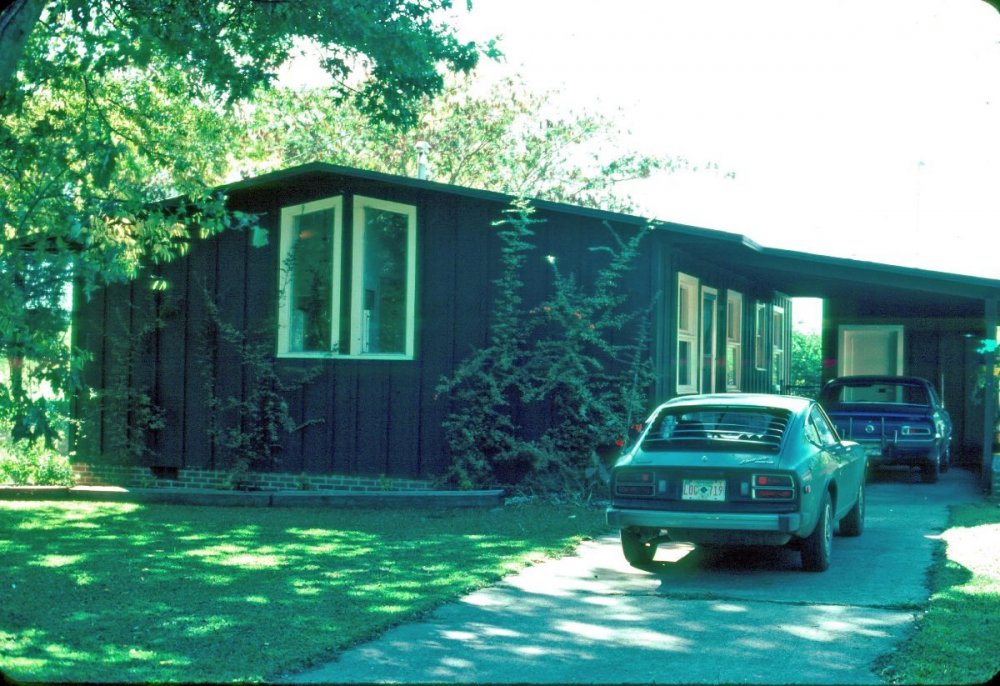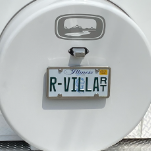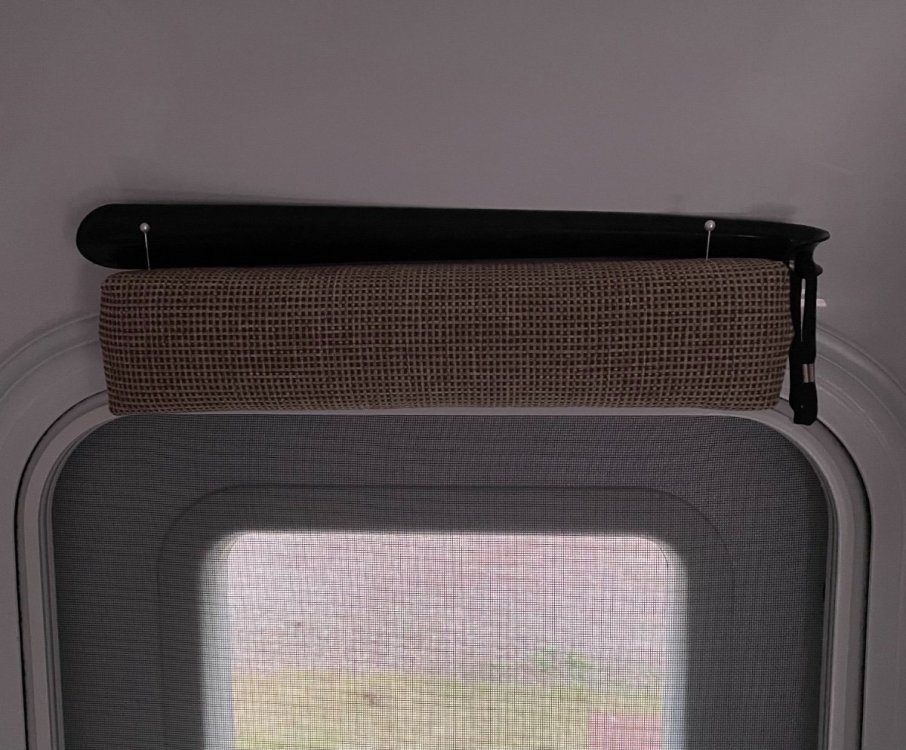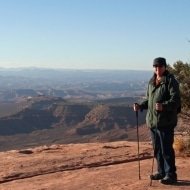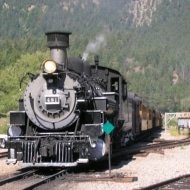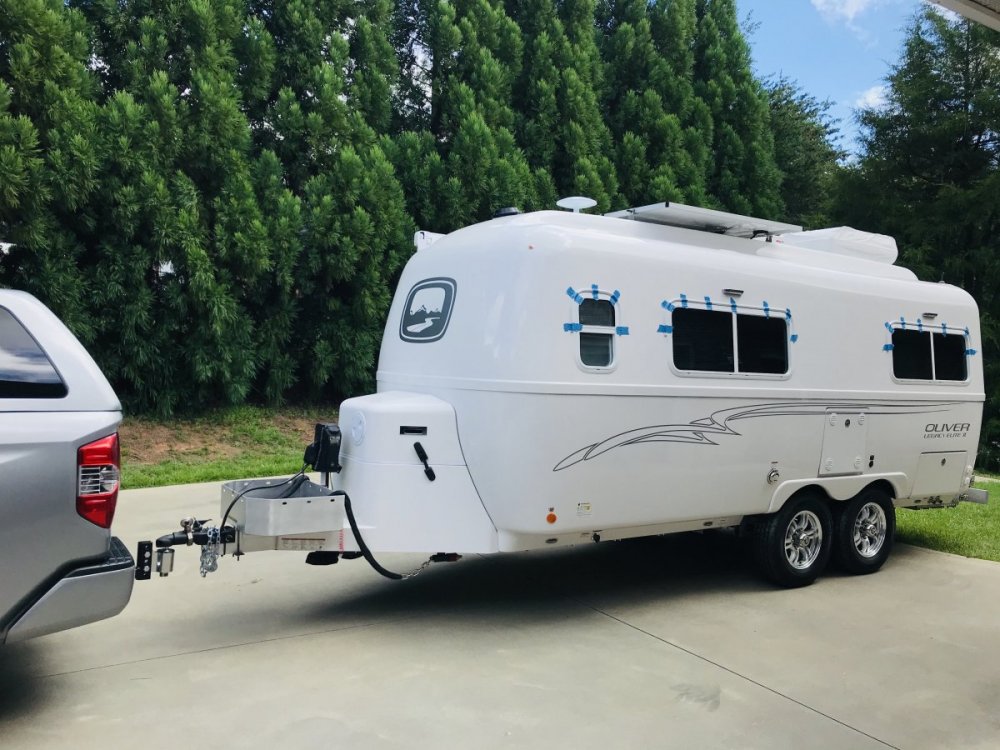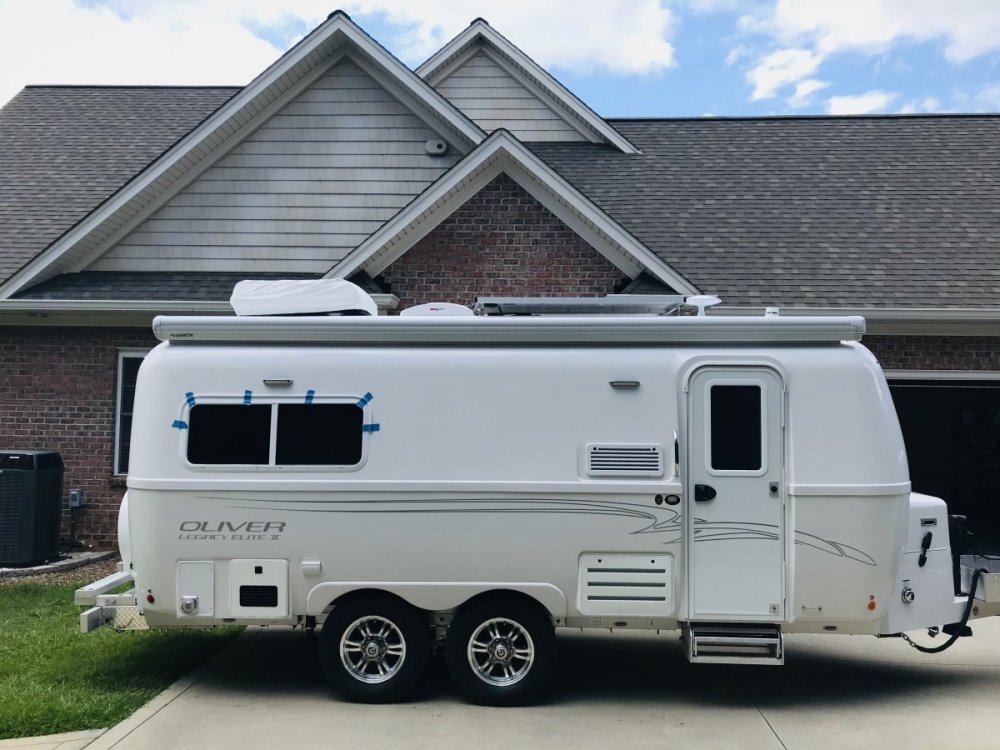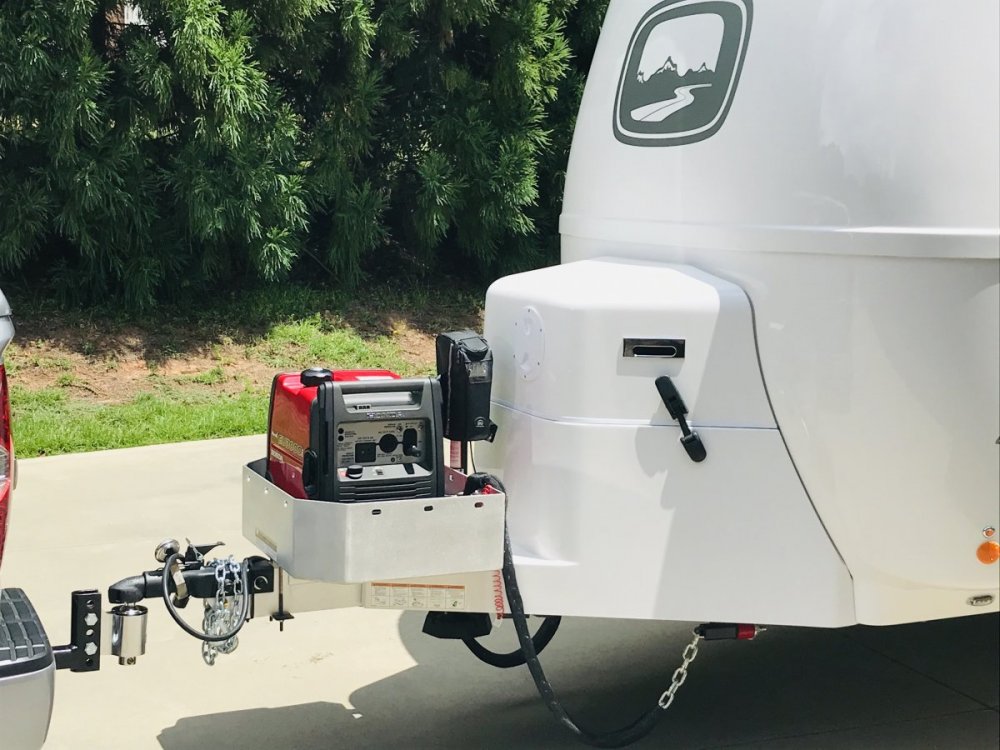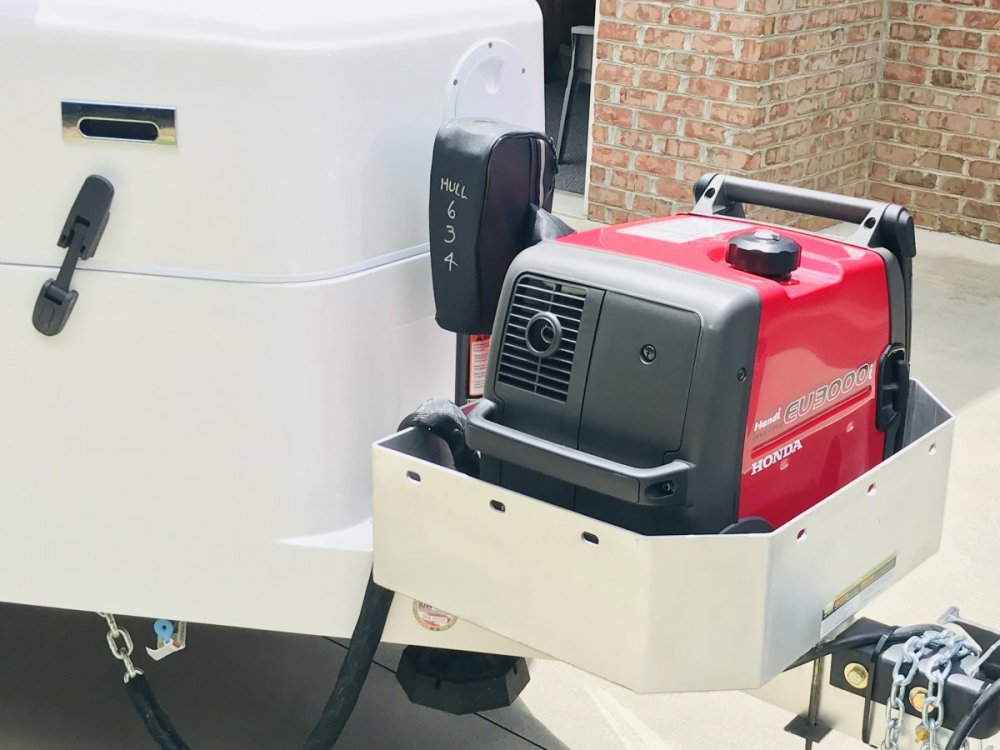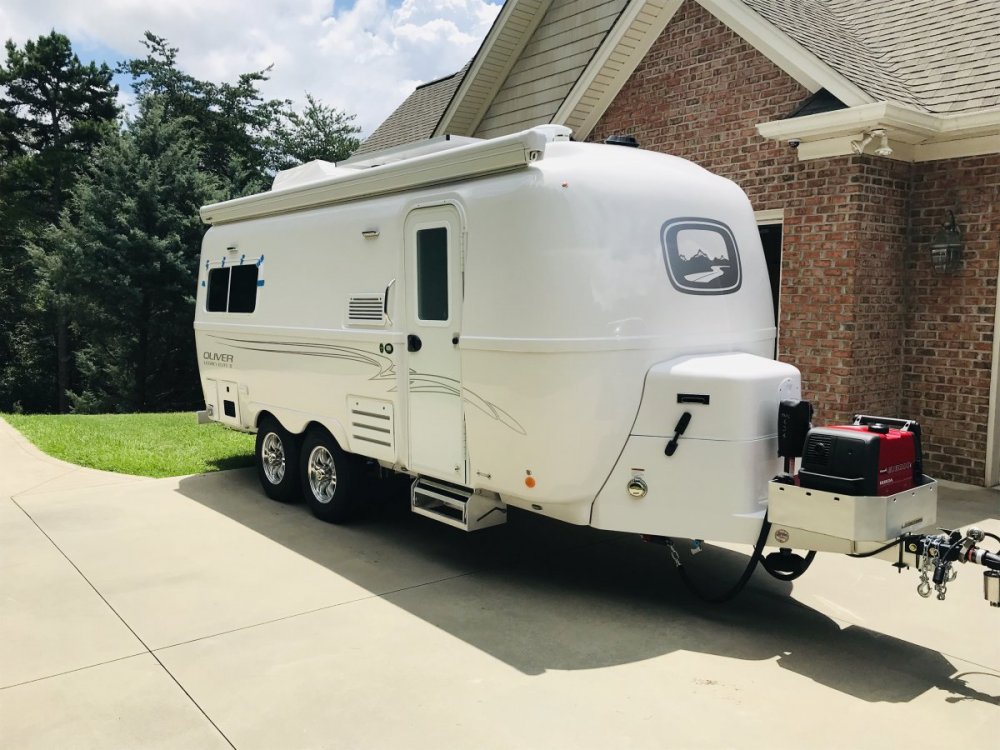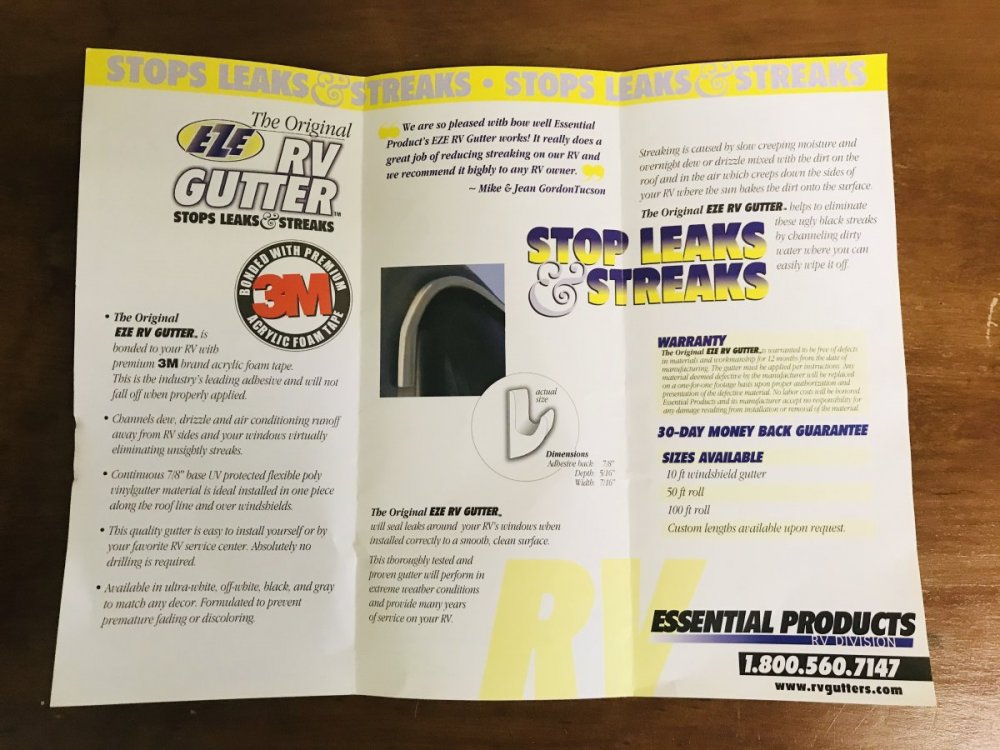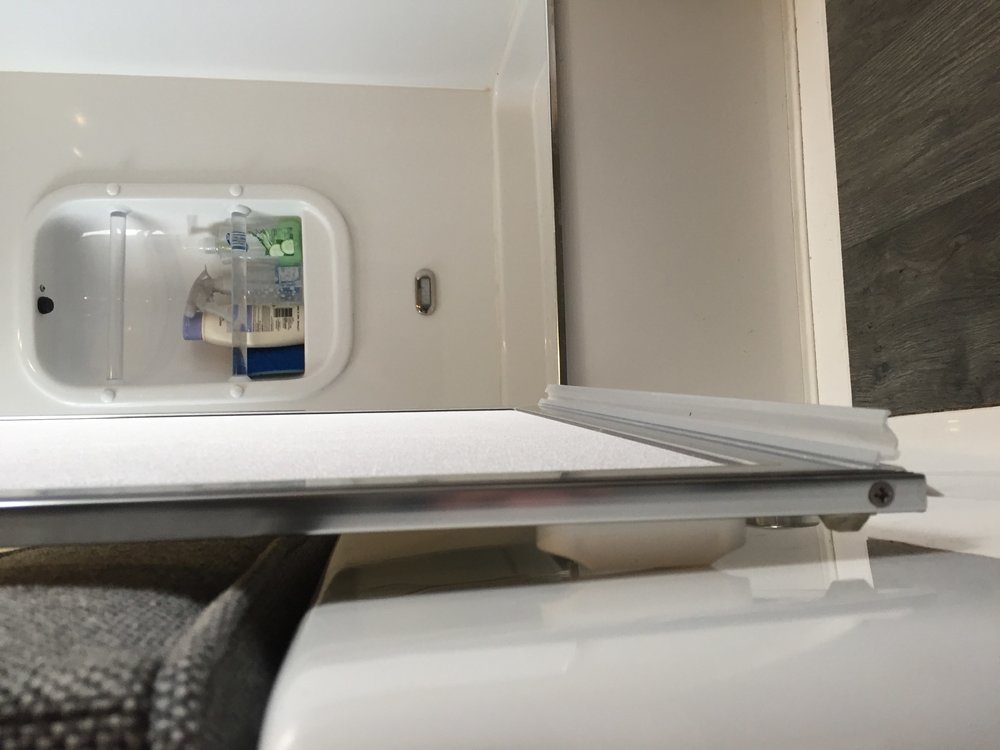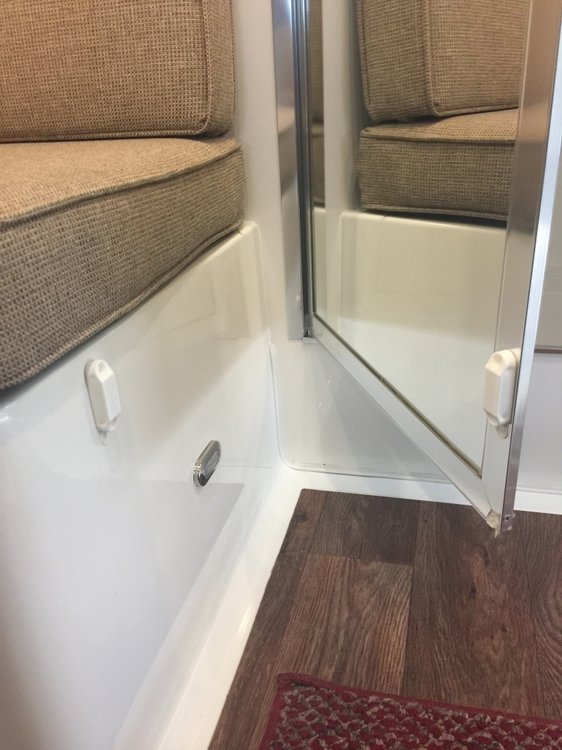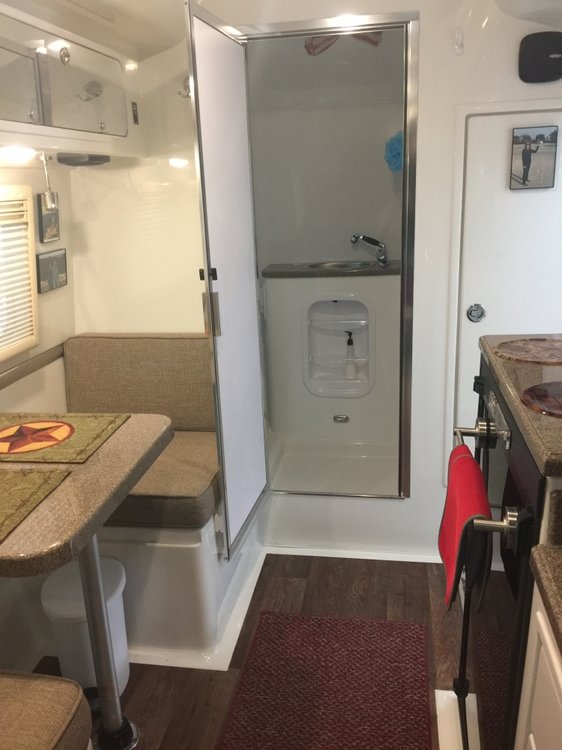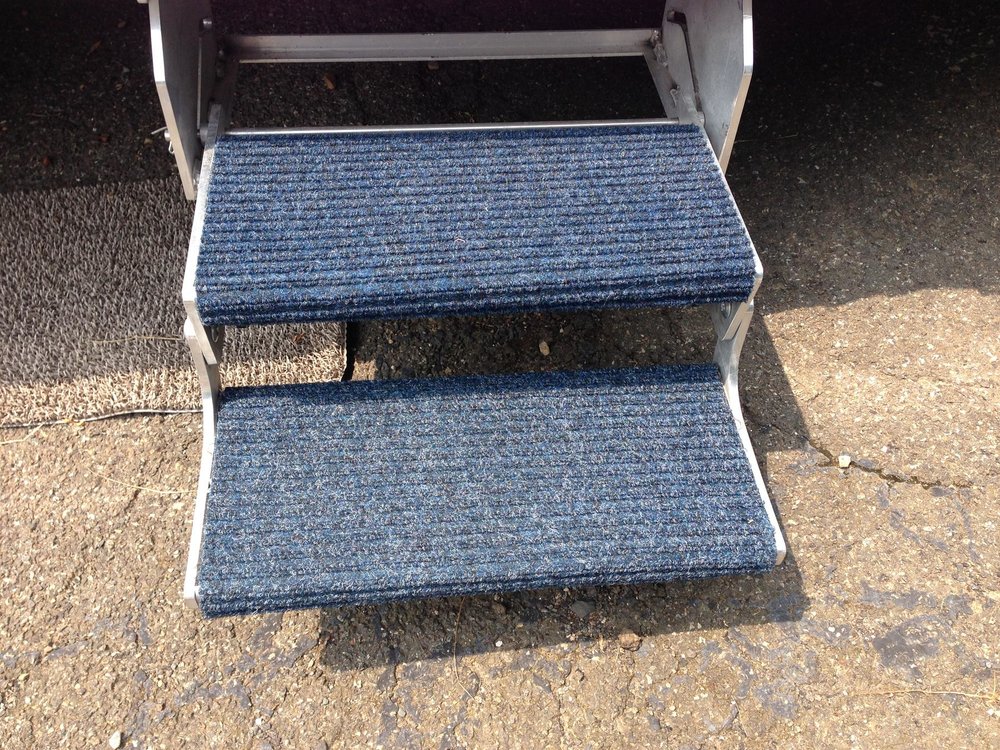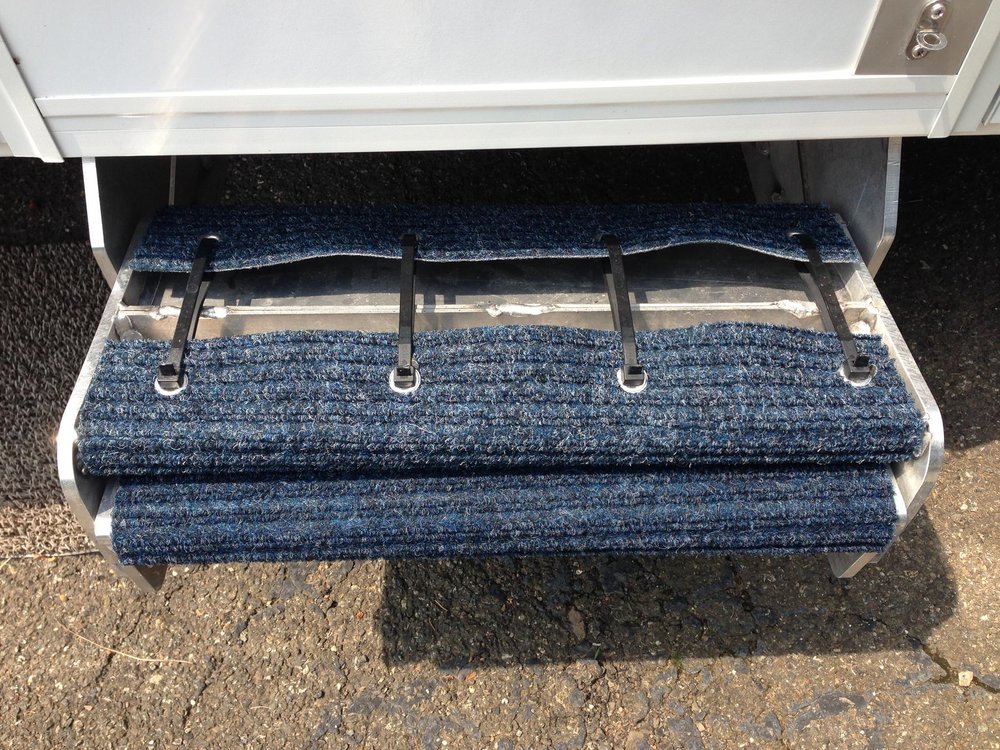Leaderboard
Popular Content
Showing content with the highest reputation on 07/16/2021 in all areas
-
Our trailer is almost 6 years old; I have always run the fridge on propane during travels with no issues. The only time we switch over to 12V is when we have to use one of the tunnels in our area; they require all campers of any type to stop for inspection. You have to prove to them that the gas bottles are off. After we pass through the tunnel we stop and put the fridge back on propane. We have been doing this process for many decades.5 points
-
We've had good results, as well as bad, with 3-way absorption RV fridges. Our first experience was with an older (2013) two door 7-cu ft Dometic in a 30 ft 5th-wheel. It did not have electronic controls; temp selector was a slide on the side of the cooling fins. We had no problems with it, whatsoever and it kept proper temp well. Experience #2: a 6 cu ft two door Dometic 3-way in a 25 ft. Leisure Travel Van. It struggled to maintain safe temps and most always had to be set on the coldest setting. It's possible the poor efficiency was the result of the installation; also, the fridge had plastic slotted shelves that didn't allow air to circulate well, which made it struggle to keep cool. At any rate, I hated that fridge 😠 Along comes Norcold: The Norcold in our 2021 Elite II has been great, thus far. We run mostly on propane, especially when traveling in warmer climates. Though smaller than the previous 6 cu ft fridge, it seems to have more capacity because of the shelving configuration. Also, the integrated freezer holds much more than the separate door freezer compartment in the LTV fridge. We are very happy with the Norcold.2 points
-
2 points
-
5+ years with our 3 way. No issues. We drive with propane on. We have never used 12V. The freezer keeps ice cream solid. We put warm cans/bottles in and they cool down, just like home. It uses very little propane. I don’t think this is something you need to worry about. Mike2 points
-
Thanks to all the staff at Oliver for a great delivery! We are traveling home after one night at the old sales office in Hohenwald, two nights at David Crockett SP, and now tonight we are at Cumberland Falls State Resort Park in KY. Many thanks, also, to Foy Sperring for our fabulous countertops, drawer dividers, and shower mat. Such luxury! We regret a bit that our ARE Truck Cap did not arrive from the manufacturer in time for the trip. I was told there is a fiberglass shortage. Perhaps due to COVID? Who knows. Thankfully, our dealer loaned us a brand-new tonneau cover for the journey. Whew! Boy, do these trailers pull smoooooothly! 4BD73794-9B5F-4B4F-AEFB-38CAB39A23CF.heic 1F3E5195-5718-4602-AB81-E11CAE949EE2.heic1 point
-
1 point
-
We tend to follow cooler weather, but we still sometimes wind up in 90 plus degree weather. Our three ways did fine. Yes, they kept beer cold, as well as food. We don't often buy ice cream, but that stayed frozen, too. We've had our dc compressor fridge for two seasons now. I really like it, but it's not necessarily the best choice for everyone. Though we upgraded to 400 watts of solar, and 200 portable, I still have to run the generator some days, as it uses at least 60 to 70 amp hours a day, and that's in the relative cool of 3000 ft elevation in North Carolina. (We have only two 12v x 105 ah batteries in our Elite.) Yes, we're in the camp that ran on propane while driving. some seem to be fine on 12v driving, but not us. Relax. Get your fridge cold at home before leaving, and enjoy the 3 way. It's not that big of a learning curve.1 point
-
I always travel with the refrig on propane. The only risk of this is different state laws mostly states with bridges and long tunnels. Some are clearly marked and some have detours others don’t have anything until you see the flashing lights behind you because you have propane on board and you disobey the signs. All the years I’ve traveled with the propane on I never had a problem. But these days never say never. 😳1 point
-
I will add one thing, short wheel base tow vehicles like my LC 200 (112 inches) most likely require the use of the Andersen. Mine certainly would be uncomfortable and even dangerous without it. If you have a “typical” light duty pickup truck, with a WB of 140 to 155 inches, the Andersen may help, but it won’t be as dramatic an improvement as with a shorter truck. The longer WB truck will also be inherently more stable, less willing to swap ends in a high speed maneuver. This is simple physics. This is one reason a reaaaaaly short wheelbase vehicle like a two door Wrangler (93”) makes for a dangerous tow vehicle, and why you so often see them in ditches in icy conditions. They just don’t have much lateral stability. PS, towing puts a lot more stress on the suspension, especially the rear shocks. Keep an eye on them and replace them at the first sign of distress (usually an oil stain, indicating a blown seal). I replaced the rears myself, a few months ago, and the front struts are getting replaced by a shop as I type, three of the four units showed signs of oil leakage at 140,000 miles. John Davies Spokane WA1 point
-
Probably not much new to add to this conversation other than to say we have had our Elite II for just over 6 years now with well over 20K miles of towing and in all sorts of weather from howling winds (side and headwinds), to torrential downpours for days and do not have the WDH. FWIW I was the one who started the initial conversation some 6 or so years ago back in the day when Robert Partee was still with us. At that time Oliver did not use or suggest any WDH and no one who owned an Oliver used them either. I only brought up the issue having looked into the the specs on all towing vehicles and thought it curious Oliver did not recommend them and wanted a better understanding. The result of that thread led to Oliver adopting the Anderson. There are two specs for all tow vehicles, one with and one without a WDH and this includes not only the towing capacity but the load limits on the hitch itself. Typically a decal or equivalent is applied to the underside of the hitch stating its load and tow limit and typically those values are cut in half by approximately 50% + o - when towing without a WDH. Given my tow vehicle (an F150) my values were just under or right at the limits, so with much cogitation on the subject I chose NOT to use the Anderson. Keep in mind most all newer trucks have electronic anti-sway devices built into the system and at least on my truck this seems to work admirably. I say this because on more than one occasion I have been subjected to some harrowing emergency maneuvers on the highway while towing, or extreme wind conditions while the Oliver stayed where it should, right behind me. None of this is to suggest others do not adopt the WDH, each individual has to figure out what they are or are not comfortable with. Perhaps I am being a penny wise and pound foolish but thus far I have not seen, with my tow vehicle, the need for a WDH. Worth mentioning in the initial thread some 6 or so years ago a few comments suggested outside of the RV industry these towing specs are either completely ignored or completely unknown to the towing public, ie horse trailers, construction trailers and so on and so forth. Sure enough not sure I've ever seen anyone outside the RV industry hooked up to a heavy trailer of any sort with anti-sway or WDH hitches. Oh well. As others have suggested, tow safely and sensibly at all times with a light foot on the gas pedal. As a rule I tend to stay around 65 on the major highways a bit slower 55-60 on two lanes and will rarely get to 70 unless under idea conditions with virtually no traffic near me. My own general rule is to travel at least 5-10 mph slower than the given flow of traffic. YMMV of course. Hope this helps.1 point
-
I did a web search about using anti-sway devices in slippery road conditions. I was just curious. Both Curt and Reese anti-sway friction bar devices have a manufacturers warning stating that they should not be used in road conditions that could cause a loss of traction. I did not run across any similar cautions for the Anderson or any of the torsion bar type WDH's. Bear in mind that an anti-sway friction bar is an entirely different animal than the Anderson. They both operate on a friction principle but a friction bar is only mounted on one side of the trailer frame (and connected to a side mounted auxiliary ball on the hitch), whereas the Anderson is completely different. The friction on the Anderson is evenly distributed and constant. It behaves differently than a friction bar, and friction bars provide no weight distribution. Regardless of what system you use (or none at all) you need to adjust your speed to suit the road conditions. Slow down.1 point
-
1 point
-
Thank you ALL for responding, and so quickly! I’m very grateful. Our latest trailer, a 2020 K-Z we just bought last fall, is in the shop waiting for a prognosis after I found the ceiling insulation saturated and brown water running along the ceiling panel joints. It’s so discouraging. This is the third trailer we’ve had with major issues. I just want quality. A company that takes pride in what they build. If it does or doesn’t go back to the factory for the repairs, which will include replacement of delaminating roof decking, I think it’s gone. I almost am ready to quit camping all together. We have two kids in college. Both still want to camp. I’m thankful, but no Oliver really accommodate four adults, and while I’m 6’-5”, my son is 6’-4”. I am so fed up with garbage quality I’m considering the Oliver for the DW and I, and finding a good used pop-up for my son to drag along if he wants to camp. I know the Oliver will last me another 30 years of camping, and my kids will fight over it. I’m so impressed with the details. My son and I are engineers. We agree that the Oliver is close to what we’d design if we were building a trailer… a dream we have, but not a reality. The fit and finish, the details, the lack of points for water and rodent entry, the ease of maintenance, the materials, etc. all add to the list. My wife is not taking part in the $65k plus cost, but I told her in the next 30 years, we’ll go through three stick and tin trailers just because of the poor build quality, harsh Midwest weather, and it sitting outside… but only one Oliver. I’m not winning, but then again, I am the one who deals with the problems. No one else sees the problems. They just camp.1 point
-
Steve, if you put a foam noodle around your shoehorn and Velcro it above the door, you’d kill two birds with one stone. Stick a few corsage pins in the noodle and now you’ve got a place for your corsage pins. And another shoehorn.1 point
-
Yes but I had the corsage pins. And if I really knew the cost of the corsages and the event that was involved they probably cost me more than Velcro. But I do like Velcro. I love the sound of Velcro. Makes me want to drink Tang.1 point
-
Yeah though a photo of the cabinets and ceiling is probably a bit different. Yeah we are no strangers to having our stuff filling our camper having used a class b van for two decades and in the Oliver it's similar if spread out just a bit more. But still we are liking having taken some steps to soften the Scream-like aspects of the interior. In ways that allow us to easily remove the decor for cleaning btw 🙂1 point
-
Yeah before trips I've always turned our fridge on to 110 while still plugged in at home for at least a day before I start loading stuff into the fridge (have done so for many years with our van's Dometic and am on the same program with the Oliver's NorCold). If it's hot or muggy out (not common here despite the fun we just had with the "heat dome") we give it longer to get cold.1 point
-
When I first tried the refrigerator at home before leaving the refrigerator was empty and it seemed to cool on electric. About 2 weeks later I tried it on the road with some room temperature soft drinks and bottled water and nothing cooled after being hooked up to electric for most of a full day.1 point
-
1 point
-
1 point
-
This is the second version of the our Storage Box. I find it interesting that when we were considering an Oliver, we ruled out the Storage Basket Option, because we thought it would add to much weight to the Tongue. The used 2019 Oliver we bought already had it so we took advantage of it, after we measured the Tongue Weight to make sure it was within our TV's Specs, Loaded 580 LBS. The Box is simply 1/2 Plywood inserted inside the Aluminum Basket. Note, the Piano Hinge Top and it's Drain Tube underneath the Hinge to keep water out. The Marine Cleat is part of out "Land Yacht" theme, We lock out E Bikes to them. Note we hook the Safety Chains to the eyelet on the front when not in use. Also a Trailer Level Gauge and Electrical Cord is stored in it's holder mounted to the front. The third pic, show inside the Box. I mounted the Tools/Items we use again and again! Also on the Back panel are Stainless Steel Vents to reduce condensation build up, which they do. Finally, note the Lock/Key which are Color Coded (Yellow) to the 2 locks on the Storage Box/Tailer Hitch/E Bikes/and everything else I can think of. The Latches are from the Marine Industry, again a Nautical Theme. Note we hook the Safety Chains to the eyelet on the front when not in use. Also a Trailer1 point
-
If you are asking that of me, yes. I, my husband, and a friend did the swapout from a 2008 dometic (very heavy) to the smaller Houghton 9500 btu in an afternoon. As far as I know, four or five of us have swapped for Houghton unuts,,and we've all done it ourselves. Any good rv shop could do it, if the would tackle it. Not difficult. The most difficult part for us was getting the very heavy old Dometic off the roof, safely. Second most difficult, getting the new Houghton unit on the roof, safely. The rest was pretty easy. Thank goodness for younger friends, good ladders, and safety ropes.1 point
-
I love your mud flap install and have studied it. Sadly, its out of my wheel house. Maybe someday I'll find someone willing to duplicate and fabricate them as I think it is a much worthy mod! For now, I'm not planning much off roading (although thats more my style) with ILOVHER. As far as a blowout, I've had one in ten years and my opinion is the fiberglass in that area is more at risk for serious destruction. At that end, my fittings are the least of my worries.1 point
-
A big stone or piece of tire carcass thrown up by your trailer tires onto a QD fitting might break the whole thing clean off. Those three side connections are quite vulnerable, the rear winterization one is not. Install mudflaps on your Ollie and TV, they will completely protect those areas, and prevent stuff from ricocheting off the front of the bumper and onto your tail lights. John Davies Spokane WA1 point
-
I use quick disconnects on everything, all water hookups as well as my cable TV connections, I just purchased a Camco brass set on Amazon, 6 pairs and it did everything on the trailer plus and extras for future use. All my LP gas connections are also quick disconnect, grill, firepit, etc., which is pretty much the standard for LP gas connections. trainman1 point
-
These are the products I used but the quick connects can be purchased anywhere. https://www.amazon.com/dp/B07SKKV4GB/ref=cm_sw_r_cp_apa_glt_fabc_6AHW2GN7VSF5S5HBG8PZ?_encoding=UTF8&psc=1 And https://www.amazon.com/dp/B08MY68JKD/ref=cm_sw_r_cp_apa_glt_fabc_05TBWQ6KRM244F20J1B31 point
-
A beautiful 78 degree gorgeous North Carolina foothills morning and time for Hull# 634 to have EZE gutters installed. The install went really well and we are happy with the results. My bride was my extra set of hands which really helped. I will leave the painters tape on for another day or two ensuring a good curing of gutter adhesion material. We let the gutter material heat up in the sun which made it easier to work with. We ordered the Bright White gutter color for our 2020 Ollie which matched up perfect. We even did a gen set cargo box fit check with our new Honda Handi eu3000i and all is well. Thanks to everyone who posted up on EZE gutter install info. Another mod done! -David1 point
-
I don't know - looks like you're a quarter inch short to my eye. May need to redo them.1 point
-
I used Mike's magnet-and-Command-Strip method, but found that I could put one magnet on the door and the other one inside the compartment under the seat. This has two advantages as far as I can tell: It eliminates adding another protuberance. It weakens the magnetic pull, making it easy to pull the door back and not put any strain on the door. (These magnets are pretty powerful.) I think that someone mentioned having to put something over the magnets to weaken the pull. Putting one magnet inside the compartment accomplishes the same thing.1 point
-
1 point
-
Hey Gang! I just completed two small... very small ... mods on the Flying Sea Turtle. I added a second Ruggid RV Rug to the steps and installed EZE Gutters. EZE Gutters - These have been very extensively posted about and Thanks to all who shared their wisdom. I can add that I chose to run the gutters all the way down the sides for each of the three big windows. I ordered two 10' pieces and cut the needed length from each to do the windows above the bunks with a single piece. For the window over the dinette, I used two pieces with a splice in the middle top of the window. Not enough left over to do the bathroom window and that was just fine for me... Bathroom gets wet anyway. Alcohol to clean before putting the gutters on, and now they are on tight! We all know what they look like so i wont post pics on this. Ruggids RV Step Rugs - We bought one of these on the road and liked it so much that I sent away to Camping World for another. They install easy with the provided LARGE Zip Ties. We all know how easy the steps on Ollie get dirty and how hard they are to clean. These look nice, help keep dirt in the trailer down and even reduce the noise of folding the steps a bit. Pictures attached. They are about $19 each from CW. Safe travels everyone! Scotty .... and Donna who is napping on the couch... and the FST... and the Blue Whale. Later!1 point
-
Recent Achievements





